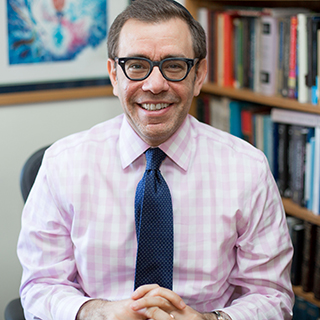The Book of Devarim and the Birth of Talmud Torah

Perhaps the greatest difference between the book of Devarim, which we begin this Shabbat, and the other four books of the Torah is the switch in modality. Genesis, Exodus, Leviticus, and Numbers describe a story as it unfolds. The characters of these books experience these events as they occur in the moment.
Not so the book of Devarim.
This book begins in a completely different way. Moshe recounts events for which his present audience has no personal memory. Except for Joshua and Caleb, this is an entirely new generation of Israelites. Not one person from the group that stands before Moshe had stood at Sinai, seen the mountain ablaze, and heard God speak out of the fire. The Covenant at Sinai was made with their ancestors, men and women who had just emerged from the experience of slavery and redemption and who faced a completely different set of challenges than the present generation. This audience is a new generation, tasked with the challenges of transitioning from a nomadic people to a nation that builds cities and cultivates a system of agriculture on the land that God had promised their ancestors.
Moshe—the man who described himself as “slow of speech and slow of tongue” having “never been a man of words (devarim)” (Exod. 4:10) begins the book withwords (devarim). Indeed, the entire book constitutes one powerful and sustained verbal presentation.
Moshe’s goals in this book remain our religious challenges: How do you render a story that happened to other people and make it your story, as meaningful to you as the day it occurred? How do you tell the story of our people’s relationship with God and move a new generation to willfully and passionately enter into this sacred Covenant? How do you make the argument to a generation of Jews that the Jewish community and Torah provide a rich and compelling framework to pursue ultimate questions of meaning?
I suggest that the book of Devarim adopts a unique path for the renewal of the Covenant, which after all is the primary purpose of the book (chapters 5–29). No form of the Hebrew root l-m-d (to learn, study, or teach) appears in any book of the Torah other than Devarim, where it appears seventeen times in thirty-four chapters. The experience of learning and teaching is central to the project of Devarim. This verb is used in connection to God teaching the Israelites, Moses teaching the nation and, perhaps most critically, the Israelites themselves teaching Torah—”Impress My words upon your heart . . . and teach them to your children—reciting them when you stay at home and when you are away, when you lie down and when you get up (Deut. 11:18–19).”
Limud (learning) constitutes the process through which we Jews connect with our history and make these historical stories our personal narratives. Understood in these terms, learning is not simply a means to acquire information. Rather, for the Jew, learning is an active process that is primarily about making meaning. The book of Devarim makes very clear that if we-in our generation-are to develop a personal, rich, and nurturing relationship with God, we must learn and study God’s Torah that reveals God’s aspirations for the world. Study is the means by which we make meaning in our own lives and it is activity whereby the Jew responds thoughtfully to the challenges of our particular age.
At the end of the book of Devarim, Moshe—the man who claimed he was a man of no words—concludes his life singing words of poetry:
“Give ear, O heavens, let me speak;
let the earth hear the words I utter!
May my discourse come down as the rain,
My speech distill as the dew . . .
Give glory to our God!”
(Deut. 32:1–3)
I submit that Moshe’s strength and newfound confidence emerged from his deep belief that he had finally found the path for real religious awakening. The thunder and direct experience of God at Sinai did not work even for the generation of the desert.
The book of Devarim creates the possibility that if God’s Presence is to be made manifest in our world, it will be in the words (devarim) of those who pursue with love the Will of the living God.
The publication and distribution of the JTS Commentary are made possible by a generous grant from Rita Dee and Harold (z”l) Hassenfeld.



